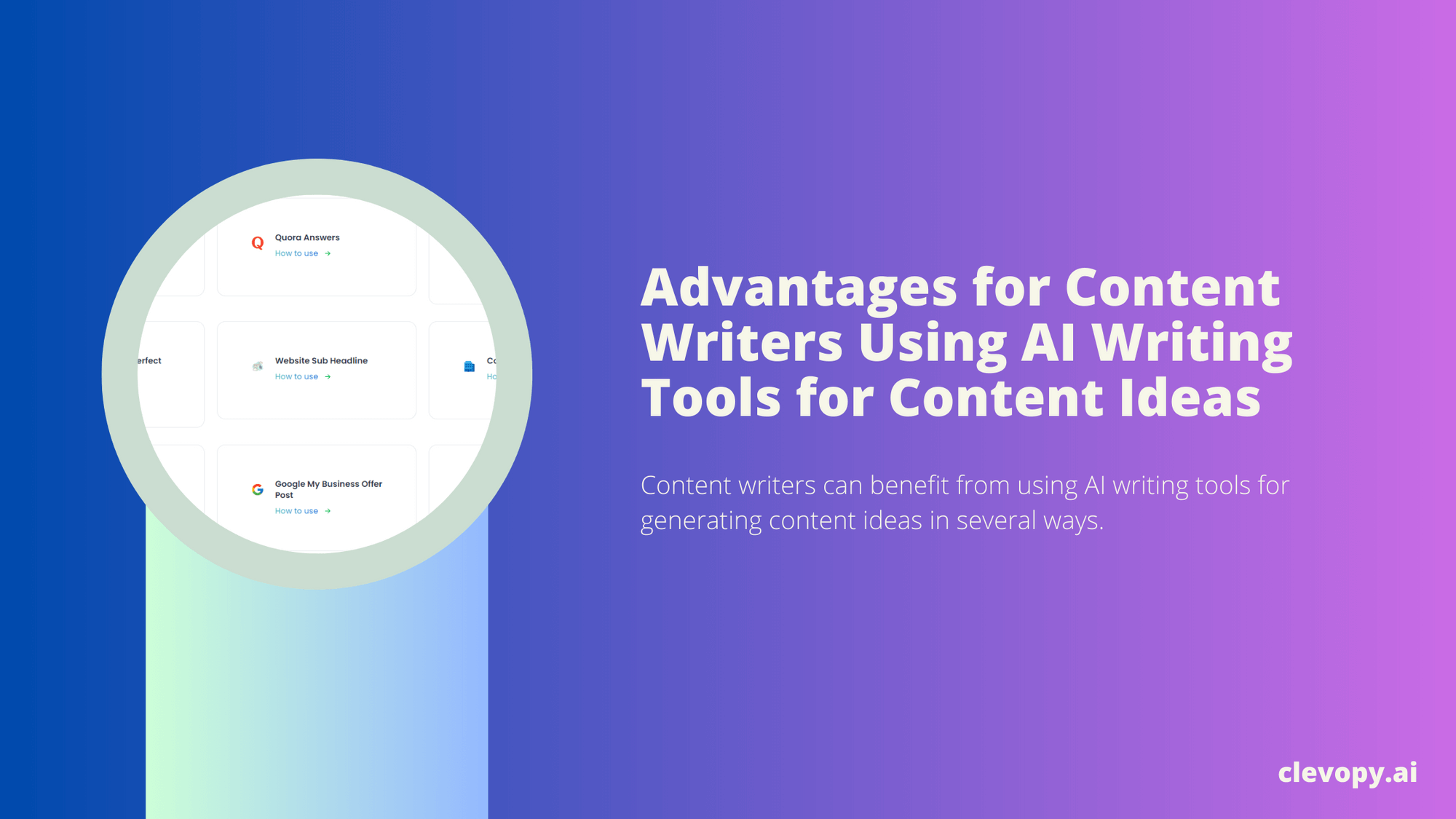Content writers can benefit from using AI writing tools for generating content ideas in several ways.
AI-driven writing tools can provide content writers with new and fresh ideas by leveraging natural language processing capabilities. AI tools can help identify topics that are trending and relevant to the target audience, allowing content writers to create engaging and effective content.
With this advantage, AI tools can analyze the writer's style of writing, enabling them to efficiently produce better quality content with some providing automated editing features or grammar corrector tools, helping content writers save time and effort on proofreading.
Thinking of researching your next topic or idea? AI writing tools will also save time when it comes to research as they can quickly scan through vast amounts of data to locate information that is needed.
Here are some advantages:
Inspiration and Idea Generation:
- AI writing tools can provide a wealth of inspiration and generate a wide range of content ideas. They analyze vast amounts of data and trends, offering writers fresh perspectives and innovative concepts to explore. This can help writers overcome writer's block and discover new angles for their content.
Data-Driven Insights:
- AI tools can analyze user data, search trends, and social media conversations to identify popular topics and emerging trends. By leveraging this data, content writers can gain insights into what their target audience is interested in and create content that aligns with their preferences and needs. This increases the chances of creating relevant and engaging content.
Time Efficiency:
- AI writing tools can significantly reduce the time spent on brainstorming and researching content ideas. They automate the process of gathering information, scanning through data, and presenting relevant ideas, enabling content writers to focus more on the actual content creation. This improves productivity and allows for a faster turnaround in content production.
Diverse Content Formats:
- AI tools can suggest content ideas across various formats, including articles, blog posts, videos, infographics, and more. This helps content writers explore different mediums and diversify their content strategy, catering to different audience preferences and consumption habits.
Improved Keyword Optimization:
- AI tools can analyze keywords and provide recommendations for optimizing content to improve search engine rankings. They can suggest relevant keywords and long-tail phrases that are likely to attract organic traffic. By incorporating these suggestions, content writers can enhance the visibility and discoverability of their content.
Content Gap Analysis:
- AI tools can conduct content gap analysis by examining existing content and identifying areas where new content can be created. They can detect gaps in coverage, unanswered questions, or untapped subtopics within a particular subject. Content writers can then fill these gaps by creating valuable content that fills the information void and addresses the audience's needs.
Language and Grammar Support:
- AI writing tools often include grammar and language-checking features. They can assist content writers in identifying and correcting grammar errors, enhancing clarity, and improving readability. This ensures that the final content is polished and professional.
Collaborative Opportunities:
- AI writing tools can foster collaboration and ideation among content teams. They can facilitate brainstorming sessions, provide a platform for idea sharing, and allow writers to collaborate on content projects in real-time. This promotes a collaborative environment, encourages creativity, and enhances the overall quality of the content produced.
While AI writing tools offer valuable assistance in generating content ideas, it's important to note that human creativity, critical thinking, and expertise remain crucial. Content writers should use AI tools as aids rather than relying solely on them. The combination of AI-generated ideas and human ingenuity can result in compelling, well-crafted, and audience-centric content.



